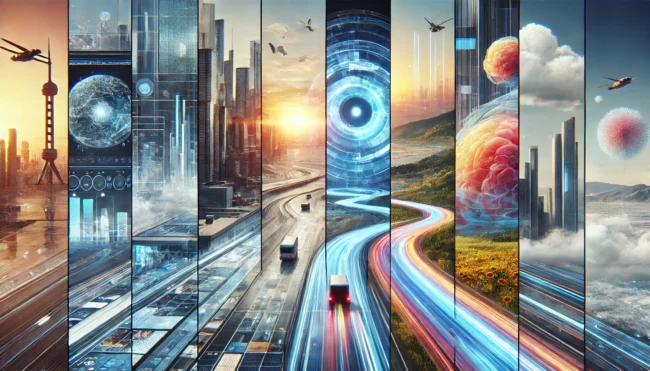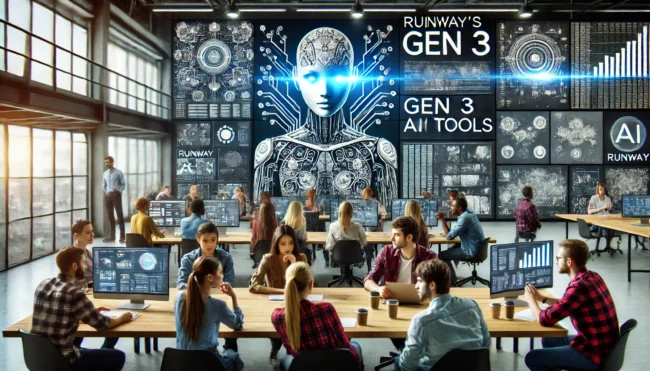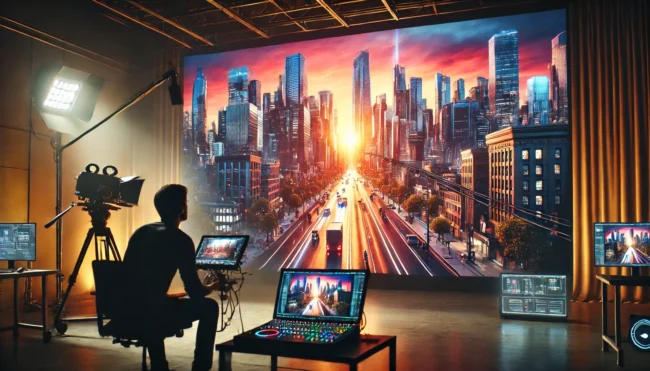In a dimly lit studio, a filmmaker watches in awe as a breathtaking cityscape materializes on her screen. Sleek skyscrapers rise from the ground, their glass facades reflecting a vibrant sunset. Pedestrians and vehicles flow through the streets, each with its own purpose and destination. This hyperrealistic urban scene, complete with intricate details and fluid motion, wasn’t crafted by a team of VFX artists over months – it was generated in seconds by Runway’s latest AI model, Gen 3. This groundbreaking technology represents a quantum leap in the field of artificial intelligence-driven content creation, offering unprecedented capabilities that promise to revolutionize visual media production. Runway, a pioneer in AI-powered creative tools, has once again pushed the boundaries of what’s possible with the release of Gen 3, a cutting-edge AI video generation model that marks a significant milestone in creative technology while raising important questions about the future of content creation.
Runway’s Journey and Evolution of AI Models
To fully appreciate the significance of Gen 3, it’s essential to understand Runway’s journey and the evolution of their AI models. Founded in 2018, Runway quickly established itself as a leader in developing accessible AI tools for creators. Their first-generation model, while revolutionary at the time, was limited in its ability to generate coherent video content. Gen 2, released in 2022, made significant strides in video quality and control, but still struggled with longer sequences and complex scenes. Each iteration built upon the last, refining algorithms and expanding capabilities. This steady progress set the stage for Gen 3, which represents a quantum leap in both quality and functionality.

Features and Capabilities of Gen 3
Gen 3 boasts an array of impressive features that set it apart from its predecessors and competitors. At its core is the ability to generate high-quality video content from text descriptions, allowing users to bring their ideas to life with unprecedented ease. The model can also transform still images into fluid video sequences, opening up new possibilities for animating static visuals. Perhaps most impressively, Gen 3 can edit and manipulate existing video footage, enabling seamless integration of AI-generated elements into real-world content. These capabilities are bolstered by significant improvements in resolution, frame rates, and overall visual fidelity. Crucially, Gen 3 offers enhanced control over generated content, allowing creators to fine-tune every aspect of their AI-produced videos.
Technical Innovations Behind Gen 3
The technical innovations behind Gen 3 are as impressive as its outputs. Runway has made significant advancements in machine learning algorithms, particularly in the areas of temporal consistency and motion coherence. The training data and methodologies have been vastly expanded and refined, incorporating a diverse range of video styles and content types. Gen 3 also represents a sophisticated integration of multiple AI models, each specializing in different aspects of video generation, from object recognition to motion prediction. When compared to competing technologies like Stable Diffusion, Gen 3 stands out for its focus on video-specific challenges and its seamless end-to-end pipeline for video creation.
Potential Applications of Gen 3
The potential applications for Gen 3 are vast and varied, spanning numerous industries and creative fields. In film and television production, the technology could be used to rapidly prototype visual effects, create realistic background elements, or even generate entire scenes from scratch. Advertisers and marketers could leverage Gen 3 to produce high-quality commercials and promotional content at a fraction of the traditional cost and time. Social media creators could use the tool to enhance their content with professional-grade visual effects and animations. In education, Gen 3 could be employed to create engaging and interactive learning materials. The gaming and virtual reality industries could utilize the technology to generate immersive environments and dynamic characters.

Impact on Creative Industries
The impact of Gen 3 on creative industries is likely to be profound and far-reaching. By democratizing high-end video production capabilities, the technology has the potential to level the playing field between large studios and independent creators. The cost and time savings offered by AI-generated content could lead to increased output and experimentation in visual media. However, this shift may also necessitate changes in job roles and skill sets within creative fields, as traditional production techniques are augmented or replaced by AI tools. Perhaps most exciting is the potential for Gen 3 to unlock new forms of artistic expression, enabling creators to realize visions that were previously impractical or impossible.
Ethical Considerations and Challenges
While the possibilities presented by Gen 3 are undoubtedly exciting, they also raise important ethical considerations and challenges. Questions of copyright and intellectual property loom large, as AI-generated content blurs the lines of authorship and originality. There are valid concerns about the potential misuse of such powerful technology, particularly in the creation of deepfakes or the spread of misinformation. The ease with which high-quality AI-generated content can be produced necessitates a careful examination of its implications and the establishment of ethical guidelines to ensure responsible use.

